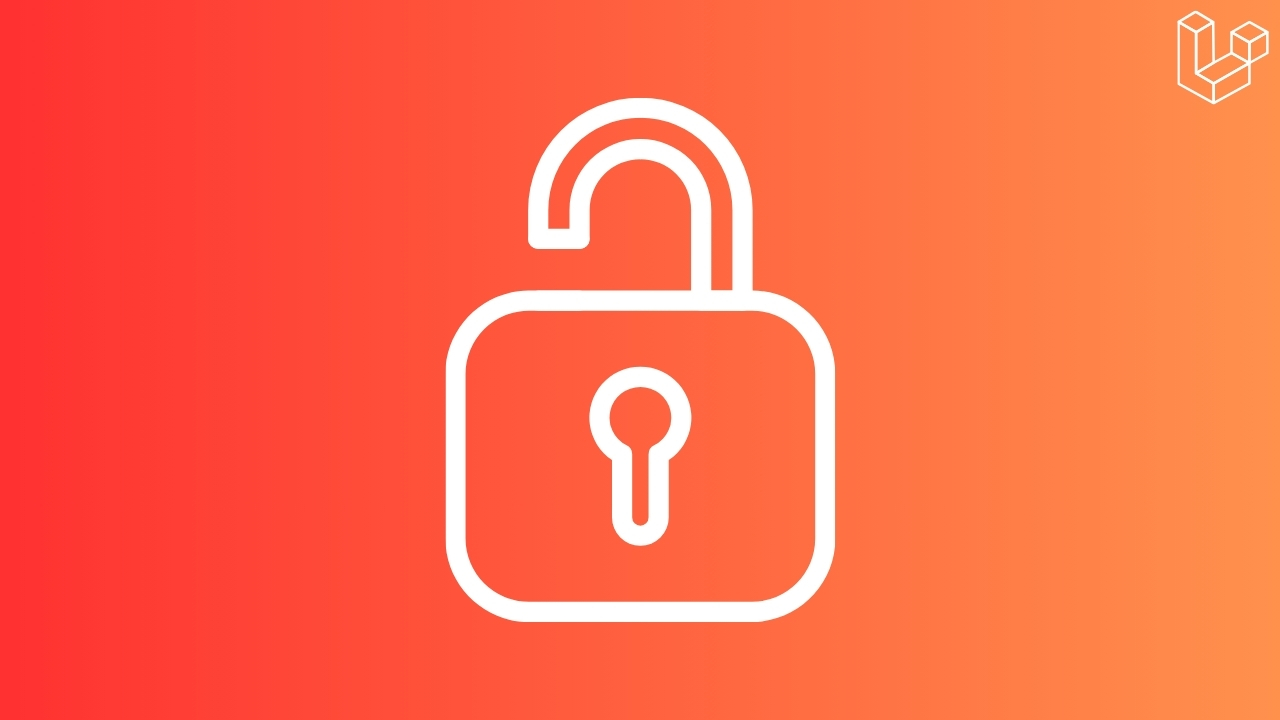Encrypting Values in Laravel 12 — A Complete, Modern Guide

Data security isn’t a bolt‑on feature; it’s a first‑class requirement. Laravel 12 ships with a polished OpenSSL‑powered encrypter (AES‑256‑CBC by default) and several developer‑friendly APIs that make it almost effortless to protect sensitive information. All encrypted payloads are signed with a message‑authentication code (MAC), so any tampering is detected during decryption.
1 · Initial Setup
1.1 Generate—and protect—your APP_KEY
Laravel will refuse to encrypt or decrypt anything until a valid 32‑byte base‑64 key is present in .env:
php artisan key:generate # populates APP_KEYCommit only .env.example; keep real keys in a secret manager. If the key leaks, rotate it immediately.
1.2 Graceful key rotation
Laravel 12 lets you list old keys in APP_PREVIOUS_KEYS so legacy data continues to decrypt while new data uses the fresh key:
APP_KEY="base64:NEW_KEY_HERE"
APP_PREVIOUS_KEYS="base64:OLD_KEY1,base64:OLD_KEY2"Laravel tries the current key first, then each previous key in order.
2 · Encrypting Individual Values
2.1 Crypt facade & global helpers
When you just need to protect a string or small blob:
use Illuminate\Support\Facades\Crypt;
// Facade
$token = $request->input('token');
$encrypted = Crypt::encryptString($token);
$plain = Crypt::decryptString($encrypted);
// Global helpers (identical behaviour)
$encrypted = encrypt($token);
$plain = decrypt($encrypted);Everything is AES‑encrypted and MAC‑signed under the hood.
2.2 Fluent encryption on Str (Laravel 12.18+)
You can now chain encryption directly on a Str instance:
use Illuminate\Support\Str;
$encrypted = Str::of('super‑secret')->encrypt();
$plain = Str::of($encrypted)->decrypt();Great for one‑liners and pipelines.
3 · Model‑Level Encryption with Casts
3.1 Built‑in encrypted casts
Attribute casting keeps your models tidy while Laravel handles encryption transparently:
<?php
// app/Models/Article.php
namespace App\Models;
use Illuminate\Database\Eloquent\Model;
use App\Enums\ArticleStatus;
class Article extends Model
{
protected $fillable = ['content', 'status', 'published_at'];
protected $casts = [
'content' => 'array', // JSON → array
'status' => ArticleStatus::class, // Enum cast
'published_at' => 'encrypted', // Encrypted datetime
];
}Other variations: encrypted:array, encrypted:object, encrypted:collection.
3.2 Custom casts & attributes
Need a different cipher, or want to mix encryption with other logic? Create a custom cast:
php artisan make:cast EncryptAsHexImplement get / set and call Crypt::encryptString internally, or use Attribute::encryptUsing() inside an accessor.
4 · Protecting Environment Files
php artisan env:encrypt # creates .env.encrypted and prints key
php artisan env:decrypt --key=... # reverses the processOptions like --cipher and --force let you tweak the workflow for multi‑env setups.
5 · Cookies Are Already Encrypted
Every cookie generated by Laravel is encrypted and signed by the EncryptCookies middleware. Read them with $request->cookie('name'); there’s nothing extra to do.
6 · Client‑Side Encryption (Optional)
Certain regulations require that data leave the browser encrypted. A typical pattern:
Use the Web Crypto API (
crypto.subtle.encrypt) in your Vue/React SPA.Send the ciphertext to the server; Laravel stores it verbatim.
Decrypt in a secure back‑office service (or on demand) with the shared key.
Because keys must live in the browser, evaluate the threat model carefully.
7 · Testing Encrypted Data
public function test_published_at_is_encrypted()
{
$article = Article::factory()->create([
'published_at' => encrypt(now()),
]);
$this->assertNotEquals(
now()->toDateTimeString(),
$article->getRawOriginal('published_at')
);
$this->assertEquals(
now()->toDateTimeString(),
decrypt($article->published_at)
);
}8 · Security Checklist 🔒
✔️ Step | 🛡️ Why It Matters | 🔧 Action |
|---|---|---|
🔐 Key hygiene | A leaked key breaks all encryption | Store |
🔄 Key rotation | Limits the blast radius of a leak | Use |
🗄️ Encrypt at rest | Protects database dumps & backups | Apply |
📁 Secure env files | Stops config secrets from leaking |
|
🍪 Encrypted cookies | Prevents client‑side tampering | Rely on default |
🧪 Write tests | Guards against accidental plaintext | Assert raw DB values ≠ decrypted values |
🗑️ Zero discard | Remove plaintext logs, debug dumps | Use |
9 · Takeaways
Laravel 12 offers multiple layers of encryption:
Quick secrets →
Cryptfacade /encrypt()helperFluent pipes →
Str::encrypt()/decrypt()Column‑level →
encryptedcastsConfig secrets →
env:encryptcommandTransport → HTTPS (TLS)
Combine these with disciplined key management and you’ll keep user data safe—even if an attacker gets a database dump or environment file.